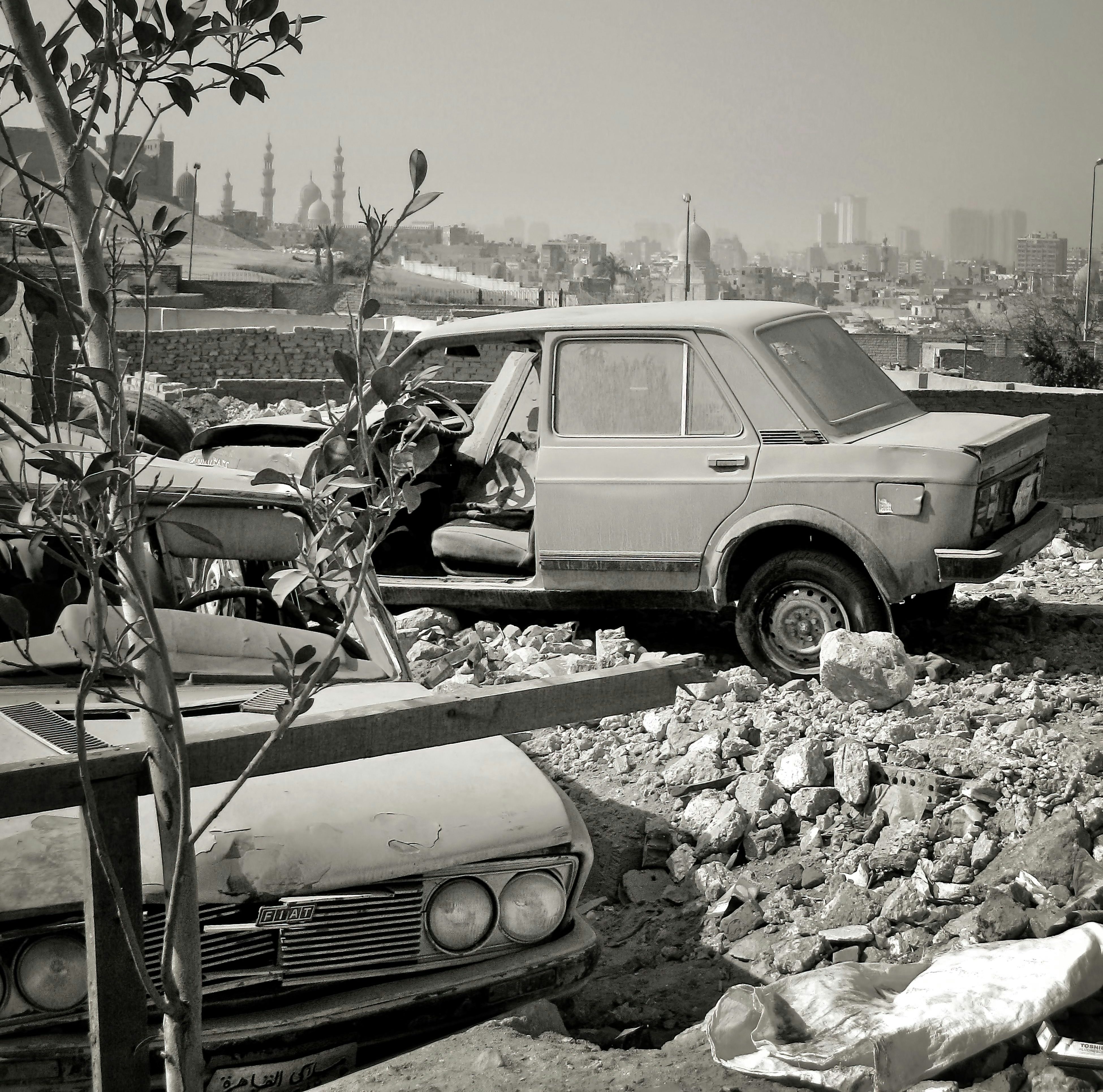
Writer: Dima Zayaruzny | Editor: Hwan Choi
John Ray, a prominent English parson-naturalist, once said, “Spend and be free, but make no waste.” Our modern societies openly embrace a different proverb: Spend and be free, and make as much waste as possible. Globally, more than 2 billion tons of municipal solid waste are produced annually. The astonishing amount of garbage begs the question of who processes the waste; who cleans up the mess?
Cairo’s Garbage Collectors: the Zabbaleen
Have you ever thought about the people who process your waste? Who they are, whether they find any satisfaction in their work, or what led them to it? Across the world, countless individuals are responsible for managing the staggering amount of waste we generate. Some waste workers are union members, some face labor exploitation, and others—uniquely Coptic Christians in Cairo—find a way of life in the garbage economy. In Cairo, the Coptic Christians, a small ethnic minority, are the primary collectors and recyclers of the city’s trash. Referred to as “Zabbaleen” or “garbage people,” they live mostly in Mansheya Nasir, a district in Western Cairo. In 2015, despite not receiving formal recognition from the Egyptian government, the Zabbaleen were responsible for handling a staggering amount of waste: one-third of Cairo’s municipal waste (around 4,500 tons per day). Even more impressively, the Zabbaleen recycle 85% of the waste they collect while generating jobs and incomes for the local community. This industry has sustained the Zabbaleen for generations and has been described as “one of the world’s most efficient and sustainable resource-recovery and waste-recycling systems”. Even with limited infrastructure, meager support from the government, and societal marginalization, the Zabbaleen have created a waste management supply chain vital for the city.
The Zabbaleen’s Way of Life
Truly, the Zabbaleen carry a large weight of Cairo’s garbage output on their shoulders. But how does their altruistic occupation help them find a way of life?
The largest portion of the Zabbaleen’s income flows from the reselling of recycled materials—not from pick-up fees charged to families getting rid of their waste. To ardent students of labor economics, this fact may seem counterintuitive: workers’ major source of earning is not from wages. Subverting traditional notions of labor economics, wages don’t incentivize the Zabbaleen to work; rather, recycling allows them to manufacture their own market. Without this current model, there would be no incentive to recycle. The distinctive attribute of the waste-recycling model in Cairo shows a new path that other societies can emulate. Unlike other communities, the Coptic Christians focus on creating wealth from recycled products. The information on the total amount of money generated from this process is limited. However, there is something much more important here. A sustainable supply chain has been created and the workers are reaping the benefits.
A Confluence of Religions: Changing Dynamics
Many attempts have been made to dismember the success of the Zabbaleen and substitute in their place a privatized solution. In 2003, Cairo’s government signed $50 million contracts with multinational corporations to take over the job, citing that the Zabbaleen’s method was unhygienic. This decision immediately backfired as these companies did not have the local knowledge possessed by the Zabbaleen, had trouble navigating the narrow winding streets, and were less productive as they were only required to recycle 20% of the waste. The Zabbaleen were railroaded into employment contracts with these companies—they noticed a reduction in their incomes as a result. Trash began to pile up in the streets and residents started complaining about the quality of service.
In 2009, another incident occurred: H1N1 swine flu began spreading. Coincidingly, the government called for the culling of all 350,000 pigs in Mansheya Nasir. To provide some important context, because the Zabbaleen are Christians, and not Muslims like the majority of the Egyptian population, their religion allows them to breed and live near pigs. These pigs, in turn, are fed all of the natural waste that is collected, leaving the rest of the trash to be sorted by humans. The pigs are then sold to tourist-dominated accommodations as meat for a considerable price of $80 per pig. When the pigs were culled, the Zabbaleen once again struggled, as they were no longer able to effectively sort through natural and man-made waste. Food scraps began rotting in the streets, a surge of rats and disease appeared in certain neighborhoods, and residents once again rightfully complained. Ultimately, a confluence of two distinct religions—Christianity and Islam—engendered a series of ineffective policy changes. These sudden policy changes drastically impacted how waste was managed in Cairo. Fundamentally, these changes brought about a global recognition of the efficiency of an effective, informal waste management system, such as the one implemented in Cairo.
On the other hand, it is important to consider the health impacts associated with being in such proximity to potential hazardous waste products. While increased risks for respiratory diseases and cancer are well documented, another virus has ravaged the community: the Hepatitis C Virus (HCV). As an avenue of their recycling-based economy, the Zabbaleen are involved in the illegal trade of medical waste. Improper disposal of needles and syringes is incredibly dangerous; according to the WHO, “HCV kills an estimated 40,000 Egyptians a year and at least 1 in 10 of the population aged 15 to 59 is infected.” This yields an ethical question: to what extent is a sustainable and efficient waste management program worth it? Is the recycling of waste being put above the health of the Zabbaleen? This marginalized community’s relationship with waste can be viewed as both a success story and a public health crisis waiting to happen. Although Cairo’s government has made some questionable decisions regarding the Zabbaleen, they must make crucial choices to protect them from potential dangers in their workplace. Yes, this system of garbage removal and recycling works, but efficiency is only relevant until it compromises public health.
Conclusion
The story of Cairo’s Coptic Christians is an important one as we attempt to form our own efficient, sustainable garbage system. According to the EPA, the United States recycles at a comparatively measly rate of 32%. We send our trash overseas for migrant workers, living on starvation wages, to pick through. By learning from both the strengths and shortcomings of Cairo’s Zabbaleen, we can rethink waste management as a system that values both efficiency and human dignity. Real change requires not just better policies, but a shift in our attitudes—one that prioritizes sustainability, labor rights, and corporate accountability. If we commit to these changes, we can build a future where waste is not just discarded, but transformed into opportunity.
Photo by Simon Berger on Unsplash



